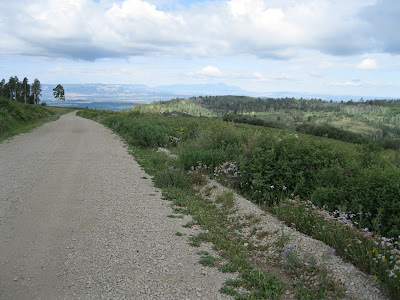I started my hike on the Animas River Trail at the Santa Rita Park. Following the trail north, it is about 2 miles to the Discovery Museum. The Santa Rita Park is about 1 mile south of the junction of Highways 160 and 550.
In 2011, there is a $9.50 charge for adults. Much of the interior space is devoted to hands on activity for children, with an emphasis on electricity. The displays are still in development but there was a lot of activity on the day I visited.
I thought the most interesting area for adult visitors was the old boiler room area and the adjacent turbine and generator. This large room also has a screen for video displays and some chairs for viewers. The manufacturing information attached to the boilers says Heine Safety Tube Boiler, and Risdon Iron Works Builders, SF CAL. 1908, and also Utah Copper Company 1906. There are also antique valves, pumps, and gauges in the boiler room.
One of the boiler doors is open for a view of the boiling tubes. Originally the power plant used coal, and converted to gas in the 1940s. In the mid 1970s the plant was shut down and sat idle until 2002 when the renovation activity began. The exterior was completed in 2006.
Sitting just outside of the boiler room is one of the turbine engines and an attached generator. The manufacturing inscription says General Electric Company. The Durango Power Plant was one of the first on the western slope of Colorado to use AC power.
The Durango Power Plant used California Mission style architecture with two twin towers on the north end. The east side tower has an unusual way for visitors to climb up to the top of the tower for the roof top views both outside and inside. There is a circular series of steps, but the climber has to twist from side to side to make the climb. This unusual climb can start at the floor level or about halfway up after climbing normal stairs.
From Santa Rita Park it took me about 0:45 minutes to arrive at the Discovery Museum. My total hike with the museum visit and some searching for the Durango Pumas on Parade took about 3:30 hours on a 40 F degree late December day.

















































